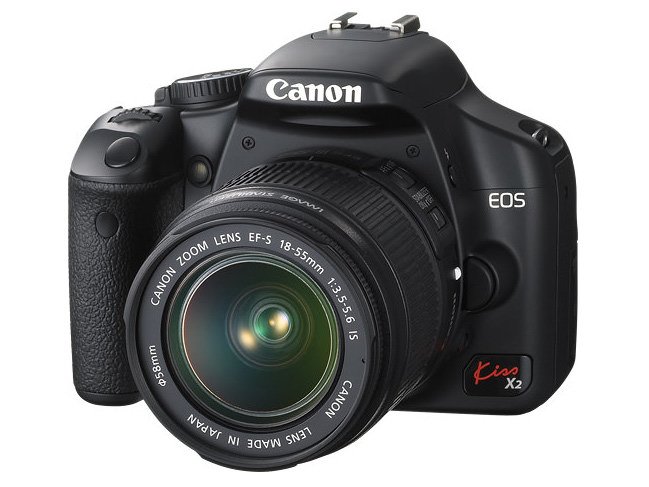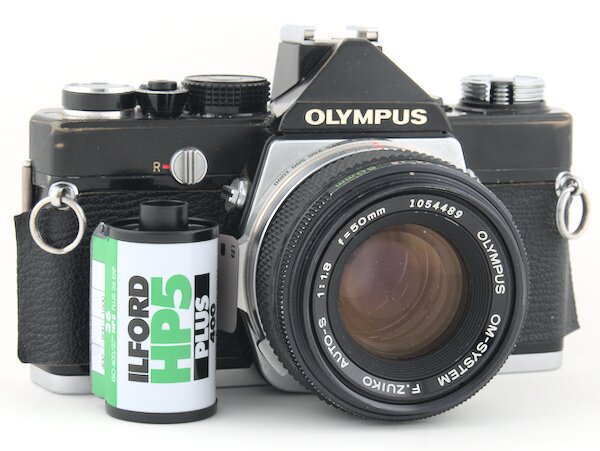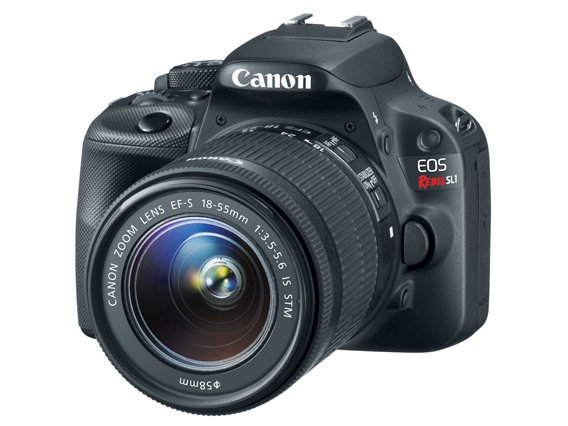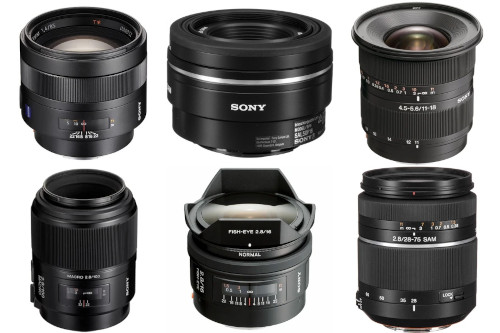
The 6 Best Lenses for the Sony A77 II
- Nathaniel Stephan
- Sony a77ii
- April 10, 2020
Table of Contents
The Sony A77 II is an awesome camera. If you do not currently own a lens or are wanting for a new lens, this page will cover the top 6 lenses for your Sony SLT-A77 II.
Affiliate Advertising Disclosure
Outside the Shot is a participant in the Amazon Services LLC Associates Program, an affiliate advertising program designed to provide a means for sites to earn advertising fees by advertising and linking to Amazon.com.
As an eBay Partner, I may be compensated if you make a purchase. I also participate in affiliate advertising programs with KEH and Adorama. More can be found on the Affiliate Disclosure page.
Standard Primes
Sony 50mm f/1.8 SAM DT
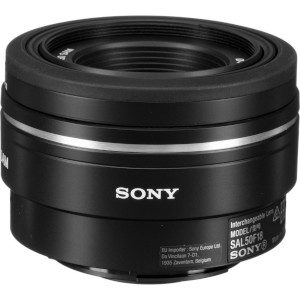
- Outstanding optics.
- Small and light weight.
- Can be difficult to find new.
- Smooth Autofocus Motor (SAM)
- Circular aperture.
See current price and more information on:
An awesome combo of very small size and minimal weight. The autofocus motor is quieter and faster than previous lenses that use the physically coupled autofocus.
The circular aperture allows you to stop down to f/4 and still have an almost circular aperture. The result is attractive bokeh and more freedom in managing depth of field.
Minolta Maxxum AF 50mm f/1.7
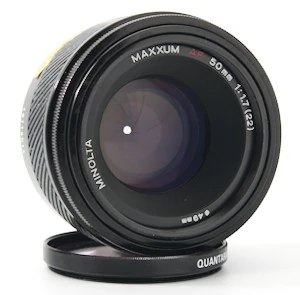
- Built-in lens hood.
- Amazing value.
- Light and compact.
- Widely available used.
- Coupled autofocus.
See current price and more information on:
This is an older design from the release of the A-mount. As a consequence of the age of the lens, the autofocus is controlled by the motor built into the A77 II.
Mechanically coupled autofocus can be a little noisy and slow. If that’s not an issue for you the results are amazing. {The bokeh is attractive and you’ll get a classic look|You will get eye-catching bokeh and a classic image rendering.
One more significant advantage of the lens is the cost. It is considerably less expensive than the Sony 50mm f/1.8 and additionally could be the cheapest lens listed.
Sony 50mm f/1.4
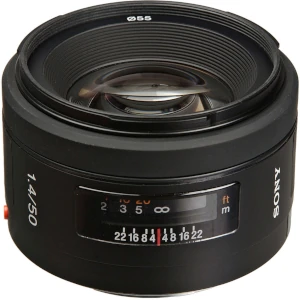
- Outstanding optics.
- Optical multi-coatings.
- Circular aperture.
- 55mm filter threads.
See current price and more information on:
A little bit faster when compared to the f/1.8, nevertheless that can actually be important when you are taking pictures without much light. That without a doubt comes at a larger expense.
It is still a lightweight and small lens that fits nicely on the A77 II and will fit into almost every camera bag.
A possibly lower priced alternative is the Minolta AF 50mm f/1.4. Bear in mind that they can be quite challenging to track down in usable condition. The lens also as designed with coupled autofocus, which is worse than lenses that contain built-in motors}.
Portrait & Telephoto Lens
Sony 85mm f/1.4 ZA
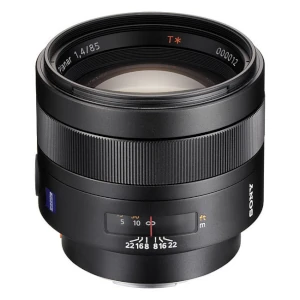
- Incredible bokeh.
- Excellent value used.
- T* coating to reduce flare and increase contrast.
- Astonishingly sharp wide open.
See current price and more information on:
Sony wanted to show off with this lens. Zeiss manufactured this lens. The ZA (Zeiss Alpha) indicates that Zeiss developed the lens only for the A-mount.
This is an excellent lens. Tack sharp corner-to-corner with stunning colors that creates amazing portraits.
A potential downside is that it is somewhat heavy as a result of being built like a tank and the autofocus can seem slow at times. Be aware, that you will find similar problems with any f/1.4 85mm.
Minolta Maxxum AF 85mm f/1.4
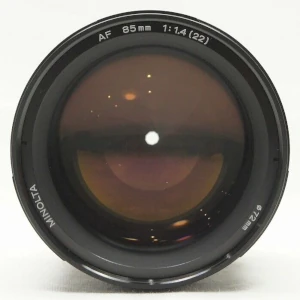
- Possible to find a good used deal.
- Superb image quality.
- Uses autofocus coupler.
- Double-Gauss design.
See current price and more information on:
The lens falls in the middle of the price range of the other two lenses. Acquiring a used copy in acceptable condition could be difficult on account of a limited supply available.
Although the lens is capable of autofocus, it’s powered by the in-body motor that works by using a mechanical coupler. This makes it a bit noisy and sluggish to autofocus.
A Double-Gauss optical design is older and uses 6 elements. An upsiade to this is images possess a distinct look that are not able to be made by modern lenses that consist of many more elements.
Sony A77 II Zoom Lenses
Sony 28-75mm f/2.8
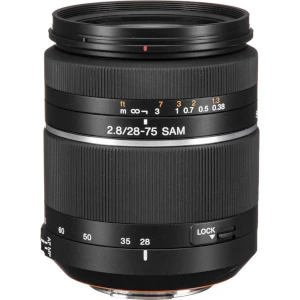
- Very usable zoom range.
- Great value used.
- Constant aperture.
- Smooth Autofocus Motor (SAM).
See current price and more information on:
If you want to shoot indoor shooting, night events, travel, and family photos, this is a fantastic fast zoom for that. The autofocus is quiet and the lens is well crafted.
The lens is often compared to the legendary Zeiss 24-70mm lens, but it’s around half the weight and has a lower price. Both lenses create professional images.
Sony 55-200mm f/4-5.6 SAM DT
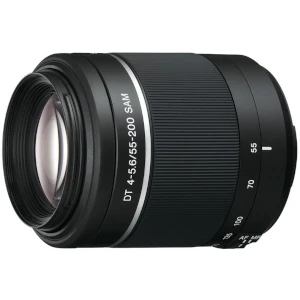
- Telephoto zoom range.
- Great for portrait or wildlife photography.
- Smooth Autofocus Motor (SAM).
- Inexpensive.
See current price and more information on:
While still delivering excellent results, this lens is a lower priced option. Even though it’s not a professional lens, accordingly as long as you don’t require high end tech, it is a very good lens.
As a telephoto zoom, it has a terrific range for shooting images of children outdoors, sports, and wildlife.
The autofocus is snappy and it creates sharp pictures. The lens is manufactured out of plastic, which helps with trimming down on weight.
Sony 75-300mm f/4.5-5.6
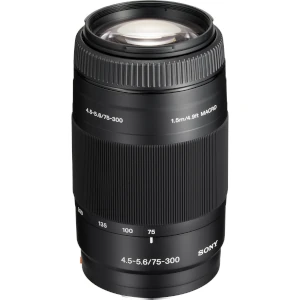
- Super telephoto zoom lens.
- Great for portrait or wildlife photography.
- 2.81 inches in diameter and 4.81 inches long.
- 55mm filter threads.
See current price and more information on:
This meets the criteria of a borderline super-telephoto lens. It is a fantastic inexpensive selection for when you desire a a long focal length.
It’s only 4.8 inches (12.2 cm) long, 2.8 inches (7.1 cm) in diameter, and comes in at 1 pound 2 ounces (510g). While not lightweight, many professional telephotos are multiple times that weight.
For just a little improved performance try to find the Sony 70-300mm f/4.5-5.6 SSM ED G-Series, but unfortunately plan on spending close to twice as much.
Wide Angle Lens
Sony DT 11-18mm f/4.5-5.6
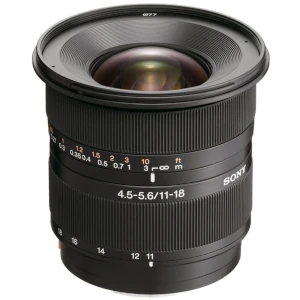
- Has a aspherical lens elements.
- Optical multi-coatings.
- Great value when purchased used.
- Circular aperture.
See current price and more information on:
Incredible quality for the price if you want to capture outstanding wide angle images that standard kit zooms cannot take. Distortion, especially of straight vertical lines is minimal or non-existent unless you’re purposefully trying to get an exaggerated perspective.
As well as being very good at capturing spectacular landscapes, it’s a great lens to travel with. The angle of view is wide enough so when you see something you will be able to get everything in frame.
Sony 20mm f/2.8
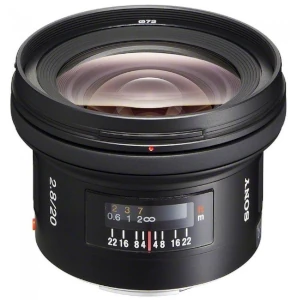
- Great for landscapes and architecture.
- Coated optics for clarity and definition.
- Rear focusing system for fast autofocus response.
- 72mm filter threads.
See current price and more information on:
It’s a well engineered lens that does an excellent job of reducing distortion. On top of that, a large amount of work has been done to decrease flane and internal reflections.
The result is a great lens that is well suited for astrophotography, architecture, and landscape photography. The rear focusing system means the front element does not rotate so you won’t have any issues using a polarizer or any other filter.
Tokina AT-X 11-16mm f/2.8 DX II
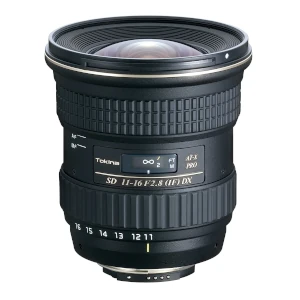
- Wide angle zoom lens.
- Hardened Alumite finish.
- Advanced optical coatings.
- All metallic moving parts.
- Designed for APS-C Sensors.
See current price and more information on:
It doesn’t have extremely fast autofocus, but the MF/AF focus clutch helps make it an excellent choice for manual focusing. A pull or push of the focus ring will switch the lens from auto to manual focus.
The Tokina is faster when compared with the Sony 11-18mm, which is not a huge deal for architecture or landscape photography. Where you’ll notice something different is with astrophotography. That’s a scenario where you will want to take advantage of the 1-to-2 stop advantage the Tokina supplies.
Fisheye
Sony 16mm f/2.8 Fisheye
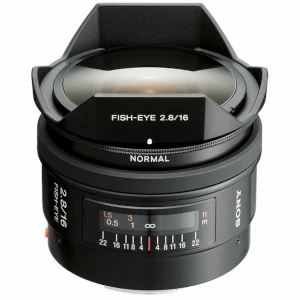
- Sharp corner-to-corner.
- 4 built-in filters: Normal, 056, B12, A12.
- 8 inch minimum focus distance.
- Aspherical and Extra-low Dispersion elements.
See current price and more information on:
The built-in filters are a good addition because the lens has a fixed petal-style hood which prevents a lens filter from being attached to the front of the lens.
- 056 - Accented contrast for black and white photos.
- B12 - Correct color by eliminating red tones.
- A12 - Correct color by eliminating blue tones.
This lens has pretty much everything you could require from a fisheye lens. You’ll get corner-to-corner sharpness without seeing vignetting while still getting exaggerated distortion.
Rokinon 8mm f/3.5 Fisheye
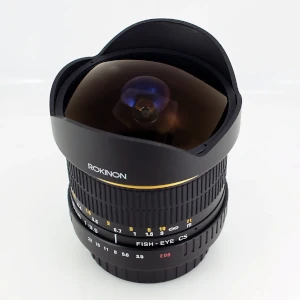
- Internal focus.
- 180 degree angle of view.
- Manual focus.
- Minimum focusing distance of 12 inches (0.3m).
- Designed for APS-C sensors.
See current price and more information on:
The lens features a spherical front element that means filters can not be used. It comes with a snap-on petal-style lens hood that you will want to make sure is included if you purchase a used lens.
Quality will be some what hit or miss as a result of the low price of the lens. The majority of people are quite pleased with the results they get. It is still important to thoroughly check out the lens when you obtain it to know for sure that it isn’t flawed.
Macro Lens
Sony 100mm f/2.8 Macro
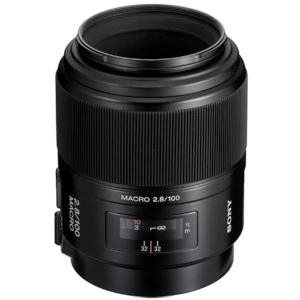
- 9 aperture blades.
- Focus range limiter.
- High contrast and resolution.
- 55mm filter threads.
See current price and more information on:
A perfect balance of working distance, price, and weight for the Sony A77 II. The autofocus can be rather loud, but for b taking macro images, manual focus is your best option.
For optimal results at 1x magnification the lens should be stopped down by two or more stops. By doing that you will get a wider depth of field, which is very useful for macro.
Sony 50mm f/2.8 Macro
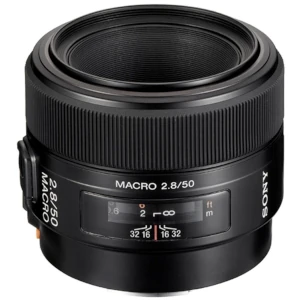
- 10.4 ounces (295g).
- Focus range limiter.
- Focus Hold button for full creative control.
- 55mm filter threads.
See current price and more information on:
The 50mm focal length is not that great for 1x magnification on account of how small the working distance will be. At that level of magnification, the front lens element will have to be around 2 inches (5 cm) from the subject.
This lens does well at copy work, tabletop, and close-up photography. It helps you to get closer to a subject than a standard 50mm lens, and that’s excellent for nature photography if you need to fill the camera frame with a smaller sized subject, such as a flower.
Tamron AF 90mm f/2.8 Di SP A/M 1:1 Macro
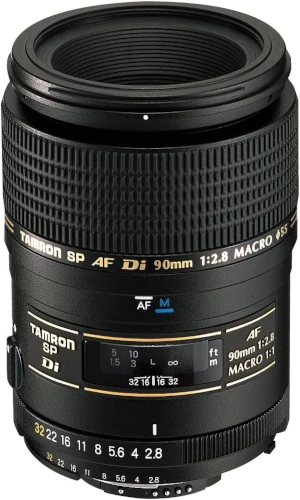
- Available in a variety of camera mounts.
- Improved resolution, chromatic correction, and optical coatings.
- Super Performance (SP)
- Focus clutch to switch between AF & MF.
See current price and more information on:
The focus ring feels great when manually focusing, and the lens also has autofocus. Closed down a couple of stops and you will get tack sharp shots.
Furthermore, be mindful when buying it as it is offered in several camera lens mounts.
Used A-Mount Camera Lens Prices
Prices change frequently. During the previous few years, participation in film photography has been going up. Seeing as there are Minolta 35mm cameras that use A-mount lenses, some additional demand is placed on the cost of lenses.
The Sony A-mount also does not hold a sizeable market share. That is why, a smaller amount of third party options exist and the lenses built by Sony are all too often on backorder.
To obtain the lowest price on what you want to buy, check prices on a few websites. For used lenses, be prepared to make a purchase when you come across a good deal as they do not last very long.
What Lens Mount Does the A77 II Use?
The Sony A77 II uses the Sony A-mount. It is also the same as the Minolta A-mount. This is due to Sony purchasing Konica Minolta’s imaging division in 2006.
The A-mount was developed by Minolta for the introduction of interchangeable lens autofocus cameras in 1985. It is still being supported by Sony to this day.
Standard Lens Cap Size
55mm, but in reality the filter sizes vary widely. Minolta lenses tend to have 49mm filter threads.
Additionally, there are quite a few lenses that have filter threads larger than 55mm. It’s not hard to find to see 72mm or 77mm filter threads. It would have been helpful if Sony tried to stick to only 2 or 3 different filter thread sizes.
